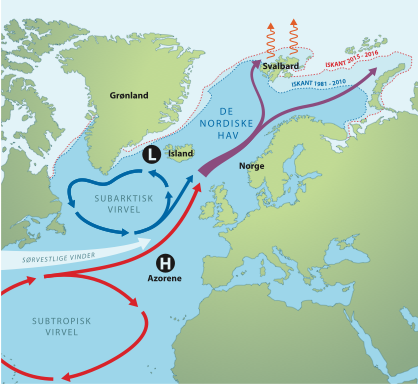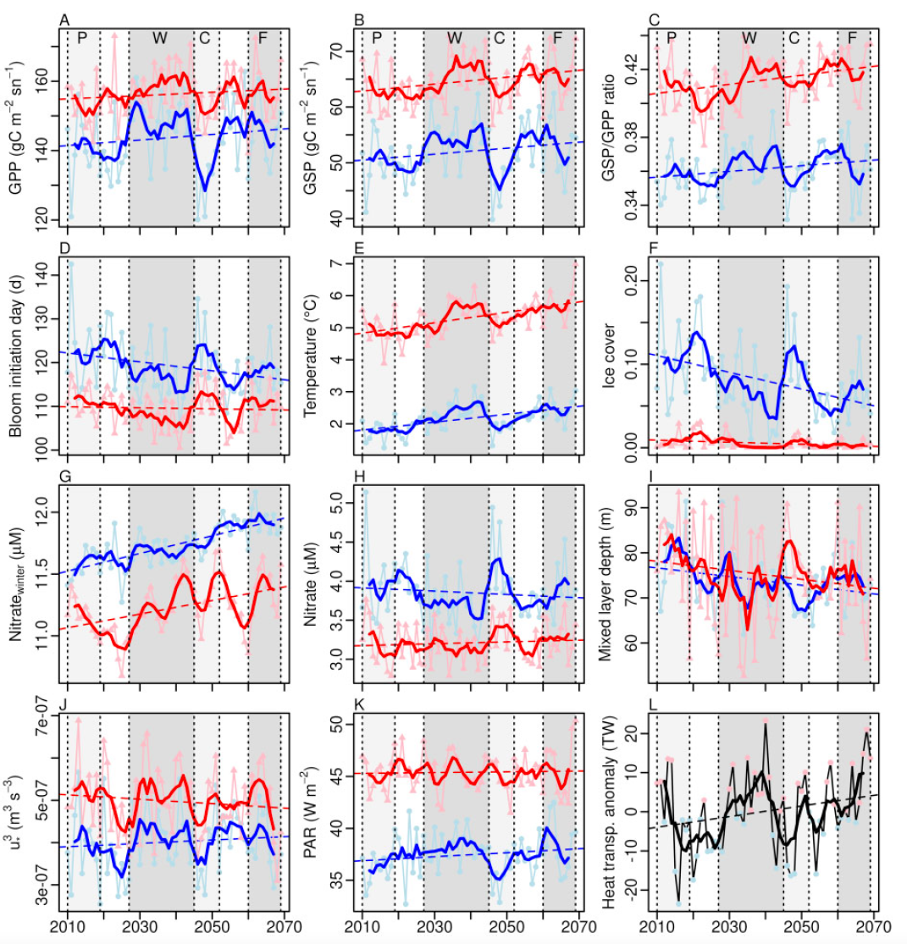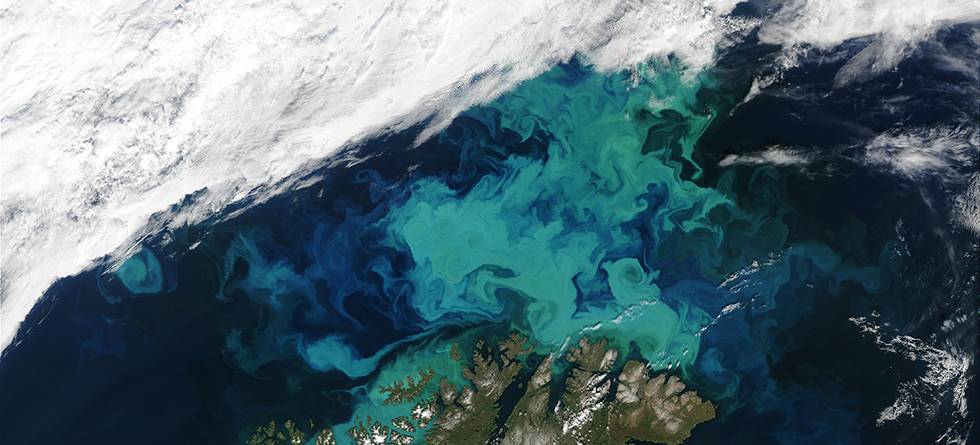Written by Anne Britt Sandø, researcher at the Bjerknes Centre and the Institute of Marine Research.
Effects of climate change on the marine ecosystem depend on the region and the species in consideration. In the Barents Sea, warm-temperate stocks are in general expected to be positively impacted due to a wider food basket and higher plankton production when the sea ice retreats, while Arctic stocks are expected to be severely negatively affected.
The Barents Sea and its marine ecosystem is exposed to many different processes which will change in the future due to global warming. These processes are related to the seasonal light variability, formation and melting of sea-ice, wind-induced mixing, and exchange of heat and nutrients with neighboring ocean regions.
To assess impacts of decadal to multidecadal climate variability on primary and secondary production in the Barents Sea we therefore downscaled a moderate climate scenario 50 years into the future.
In a recent study, we combined a regional ocean model with an ecosystem model to investigate effects of future climate change on the Barents Sea plankton production in a moderate climate scenario.
We found that interannual and decadal variability dominate the marine biological production, and specifically that a sudden and a prominent decrease in temperature was followed by a strong decrease in biological production. On longer time scales, only a modest increase in temperature and corresponding increase in biological production was found.

Variable access to nutrients as a function of wind-induced mixing and mixed layer depth were found to be the most dominating factors controlling variability in primary and secondary production in the southern Barents Sea (red time series).
In the northern part (blue time series), decreased sea-ice extent and increased access to light during the productive season lead to increased primary and secondary production. In areas exhibiting the largest decrease in sea-ice concentration, the blooming initiation day was more than one month earlier than at present.
All in all, changes in the Barents Sea biological production were largely controlled by covarying changes in heat inflow through the Barents Sea Opening, wind, and sea-ice extent.

Reference
Sandø, A. B., Mousing, E. A., Budgell, W. P., Hjøllo, S. S., Skogen, M. D., and Åd- landsvik, B. 2021. Barents Sea plankton production and controlling factors in a fluctuating climate. ICES Journal of Marine Science.
Kjesbu, O. S., Sundby, S., Sandø, A. B., Alix, M., Hjøllo, S. S., Tiedemann, M., Skern-Mauritzen, M., Junge, C., Fossheim, M., Thorsen Broms, C., Søvik, G., Zimmermann, F., Nedreaas, K., Eriksen, E., Höffle, H., Hjelset, A. M., Kvamme, C., Reecht, Y., Knutsen, H., ... Huse, G. (2021). Highly mixed impacts of near-future climate change on stock productivity proxies in the North East Atlantic. Fish and Fisheries, 00, 1–15. https://doi.org/10.1111/faf.12635

